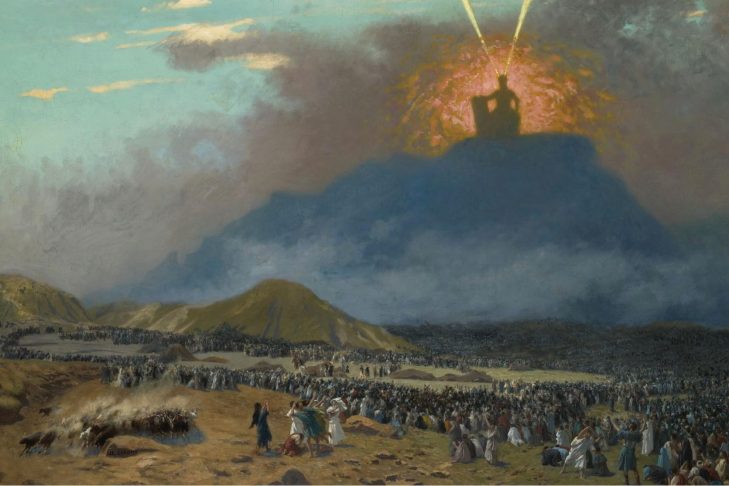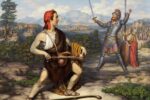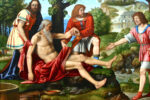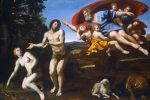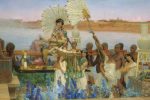Shavuot is a harvest festival that also commemorates the anniversary of the key moment when God gave the Torah to the entire nation of Israel at Mount Sinai. It was a bit of an emotional roller coaster for the Israelites—after just surviving the escape from Egypt and the splitting of the Red Sea, they make it to Mount Sinai only to have Moses disappear up the mountain to commune with God for 40 days. Coming to the natural conclusion that Moses had died from exposure, they implore his brother, Aaron, to hook them up with a spiritual fix, just a lil’ something solid to connect with—and he builds them an idol in the form of a golden calf. #Facepalm. Moses comes down the mountain with the tablets of the law just in time to witness this behavior, and promptly throws the tablets down in anger.
In many of the artistic depictions of these events, you’ll notice Moses is often shown with “horns” of light bursting out of his forehead, not unlike that Xenomorph who ripped through John Hurt’s stomach in “Alien.” In the Jewish tradition, we learn that light shone out of Moses’ face after his lengthy spiritual retreat with God. Sadly, many artists throughout history have represented the light as horns, thus bolstering the anti-Semitic idea that Jews have horns. We don’t. I keep checking!
Here are five of my favorite artist representations of the Israelite story at Mount Sinai. Please note that these images have been selected for composition, technical execution and comedic value.
“Moses Receives the Tablets”
Julius Schnorr von Carolsfeld, 1860
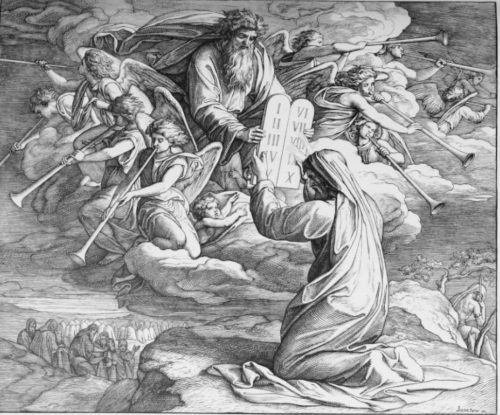
Julius Schnorr, a German painter, draughtsman and engraver, depicts the moment where Moses uses his forehead lasers to scan the tablets’ QR code. God needs a haircut but is rolling deep with his posse of obnoxious angels with vuvuzelas. One cherub is getting absolutely squashed under the front left angel’s knee, while another appears to have been smothered by God himself. Beneath the angels, in the bottom left of the engraving, we see a bunch of freaked-out Israelites who wish they hadn’t left their Xanax in Egypt.
“Moses Receiving the Law on Mount Sinai”
Benjamin West, 1784

Anglo-American history painter Benjamin West focuses the composition of this piece upon the central figure of Moses. Moses’ cape is caught in a saucy Marilyn-Monroe-esque updraft, as he reaches upward to try and get the second tablet off the top of what I can only assume is God’s refrigerator (where He also keeps paper towels and cereal). Moses is surrounded by the children of Israel, who are deeply overwhelmed by what they are seeing. Two of the figures are actually fellow artists Gilbert Stuart (in profile on the lower right) and John Trumbull (on the far left).
Everyone seems to be suffering from acute headaches caused by light sensitivity, while the figure at Moses’ feet has keeled over entirely from low blood sugar. Where do the rocks of the mountain end and the clouds begin? Inquiring minds want to know.
“Moses on Mount Sinai”
Jean-Léon Gérôme, 1900
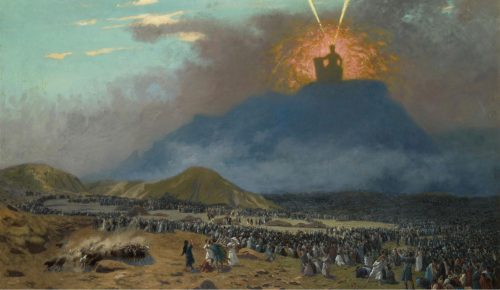
French painter and sculptor Jean-Léon Gérôme brings the drama to this oil painting, framing the events at Mount Sinai as biblical Burning Man. Moses is seen in silhouette at the top of Mount Sinai, apparently clothed in a voluminous hoop skirt with the Fox Searchlight Pictures logo affixed to his head. The Israelites below are naturally terrified by this bizarre apparition and have been vaping to chill out—hence the billowing clouds beneath the mountain.
“Moses Presenting the Tablets of the Law”
Philippe de Champaigne, circa 1648
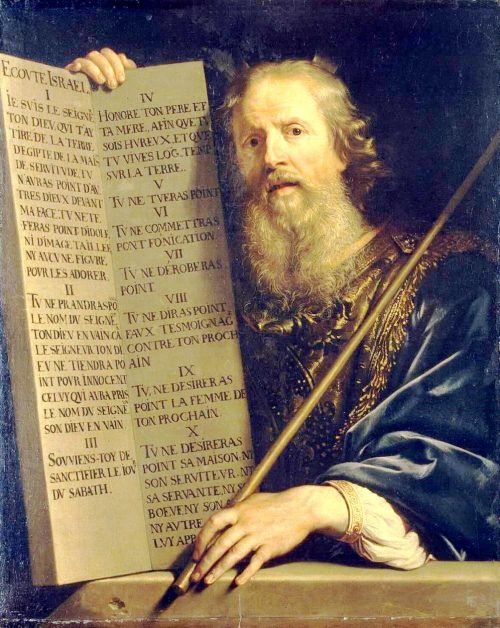
Brussels-born artist Philippe de Champaigne painted for the aristocracy like Louis XIII, which possibly explains why fancy maître d’ Moses would very much like to show you the wine list.
“The Adoration of the Golden Calf”
Nicolas Poussin, 1633
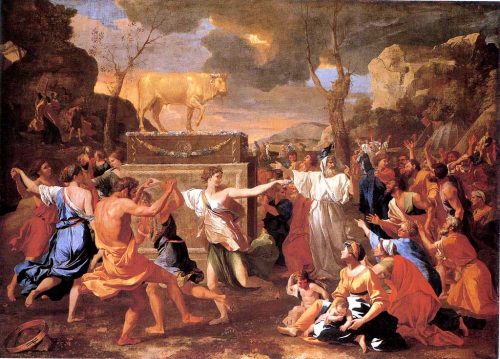
French Baroque painter Nicolas Poussin lifted the design for the golden calf groupies from another of his own paintings, which celebrated the Greek god Pan. Poussin was fine with paganism plagiarism.
A puzzling number of limbs take up the foreground of the painting, as the Israelites try to start a mosh pit while a sad, discarded tambourine serves as a makeshift halo for a rock. The golden dressage calf itself is posed mid-prance, like it just won the Westminster Calf Show at Madison Square Garden. A baby eats some dirt in the bottom right of the image, proving that in any era you can never take your eyes off children—even if there’s a really distracting huge gold idol right next to you. In the back upper left of the composition, we see Moses wielding the tablets like a folding chair at WWE, winding up to lay the Great Tablet Smackdown. Aaron, in a white bathrobe in the foreground, points back to Moses as if to say, “Oh, sh*t, guys, now look what you’ve done! Y’all better pack up your idol-worshipping dance-off sandals and run for it because you are BUSTED!”


